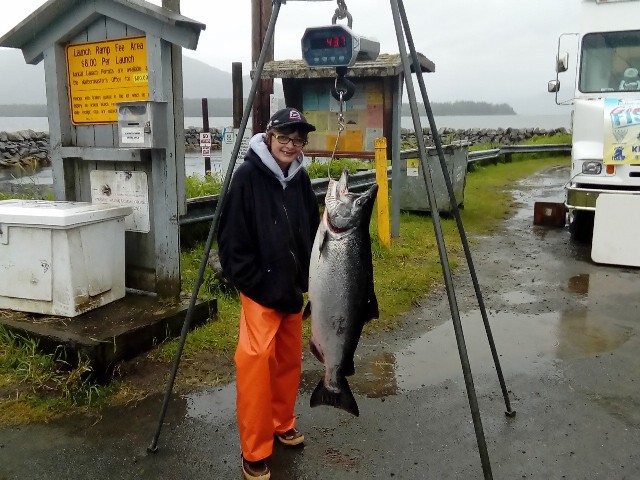
Chinook salmon, also known as king salmon, are getting smaller, and a team of scientists at the University of Washington think they know why. A new study says killer whales might be behind Chinook’s declining size.
Chinook salmon are an important part of life in Southeast Alaska. Part of the prized fish’s value is its size. Chinook are the largest Pacific salmon.
But in the last two years, returns have been low. Ketchikan, Wrangell and Petersburg all saw their king salmon derbies cancelled in 2018 and 2019. And forecasts for 2020 don’t look much better.
But it’s not just their numbers that are declining.
University of Washington researcher Jan Ohlberger published a paper last year that shows Chinook are getting smaller, too. Up to 10 percent smaller.
That discovery intrigued the researcher.
“The question is, what is the cause of that?” said Ohlberger in a recent phone interview.
A causal claim is difficult to make: correlation, of course, doesn’t always imply causation.
So Ohlberger and his team started modeling the effects of several hypothesized causes of the decline in size. They looked at environmental factors: climate, changes in the salmon’s prey, even competition with other salmon species.
Ohlberger’s team also looked at the effect of commercial and sport fishing, since fishermen, of course, prefer larger fish. But over the last 50 years, the researchers say the impact of fishing has shrunk.
Of course, humans aren’t the only animals who love to snack on Chinook.
“Killer whales currently are estimated to consume more adult fish — more adult Chinook salmon — than fishery catches take,” Ohlberger said.
Killer whale populations along the Alaska coast are booming. And they love big ol’ kings.
“Resident killer whales specifically prey on Chinook salmon, and have a preference for the largest fish,” Ohlberger said.
Ohlberger says his simulations show that killer whales’ preference for larger salmon may explain the decline in Chinook size.
“These killer whales are having an effect on Chinook salmon not only on numbers, but specifically on the mean sizes — and they likely have induced some evolutionary change,” he said.
As killer whales pick off the biggest salmon, that leaves smaller Chinook to reproduce.
So what does this mean for wildlife managers tasked with sustainably managing Chinook populations?
“If killer whales are contributing to these coast-wide trends, any local management action needs to be put in a broader context,” Ohlberger said.
Ohlberger says the findings could give officials a broader picture of what’s happening to Chinook populations up and down the Pacific coast. And that can help guide management decisions.
“So increasing, you know, abundances or hatchery production of Chinook salmon down here might be less effective given that there is a lot of predation,” he said.
He says if managers have better information about what’s eating what, they can make more informed decisions about how to best protect the struggling Chinook.
Ohlberger’s study is published in the Proceedings of the National Academy of Sciences.
This story was produced as part of a collaboration between KRBD and Alaska’s Energy Desk.





